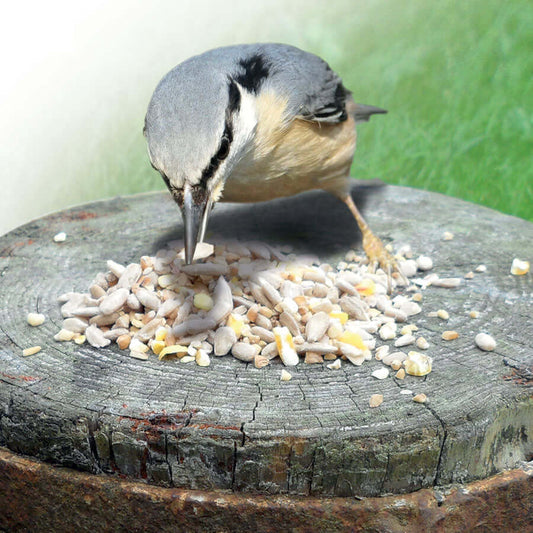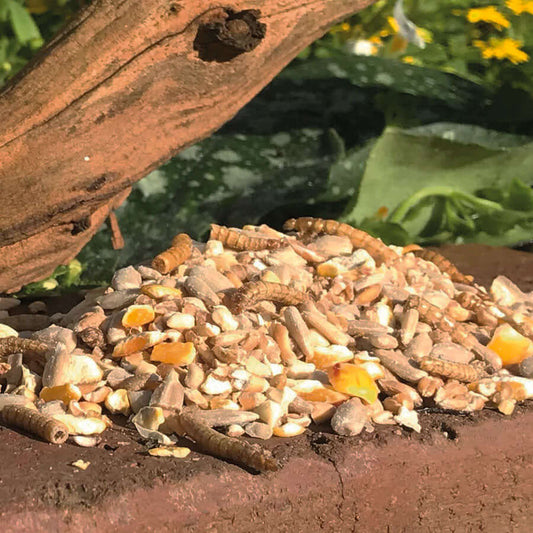Christmas Traditions Rooted in Nature

Winter is here! It’s the season for cosy fires, twinkling lights, and festive decorations that transform our homes into winter wonderlands. Families gather, friends visit, and it’s the perfect time to slowdown, savour the moment, and celebrate together. But if you wrap up warmly and step outside, you’ll discover that many of the cherished traditions of Christmas actually have their roots in the natural world. From ancient rituals to the animals we associate with the season, winter offers a glimpse into the origins of our festive celebrations.
Trees: More Than Just Decoration

Few symbols are as synonymous with Christmas as the tree. While today we often choose between real and artificial trees, the tradition of bringing a tree indoors actually dates back centuries. In the 1800s, the Royal Family popularised the practice in Britain, turning it into the festive centrepiece we know today. Decorated with candles or, more recently, twinkling lights and ornaments, the Christmas tree symbolises hope, renewal, and the promise of longer days ahead.

Long before this, ancient Germanic and Nordic Pagans had a more practical, yet equally symbolic tradition. They would drag a whole tree into the house and slowly burn it in the hearth over the 12 days of Christmas. This ritual, a form of winter solstice celebration, was believed to protect the home from evil spirits while marking the return of the sun. Today, this tradition lives on in a sweeter form: the Yule log, a chocolate dessert enjoyed in countless homes during the festive season.

The symbolism of trees extends beyond decoration. Evergreen trees, which remain green even in the coldest months, represent resilience and life enduring through the harsh winter. Their presence indoors or around our homes reminds us of nature’s persistence and the beauty of the season, even when the days are short and grey.
Festive Animals: From Robins to Reindeer
Animals play a central role in our festive imagination. Polar bears and penguins often feature on Christmas cards, evoking snowy landscapes far from our own gardens. But there are plenty of species closer to home that also capture the spirit of the season.
-

The Robin, with its bright red chest and cheerful song, is a beloved symbol of Christmas in Britain. Its bold presence in gardens during winter has made it a staple of festive imagery, reminding us that even in the coldest months, life continues to flourish. Watching these birds flit among feeders and frosted hedges is a small, but joyful, reminder of nature’s beauty during this season.
-

Then there’s the Reindeer, perhaps the most iconic festive creature of all. While we think of them as Santa’s sleigh-pullers, reindeer have a fascinating origin in mythology. In Norse legends, Thor, the God of Thunder, rode a chariot pulled by magical goats across the sky. Over time, these stories evolved, and in Western culture, reindeer became the magical creatures we associate with Santa Claus today. Their endurance, strength, and ability to traverse snowy landscapes perfectly capture the spirit of winter and
the wonder of Christmas.
The Magic of Snow

A white Christmas is a dream for many, though it’s far from guaranteed. The Victorian era, when the UK experienced a mini-ice age, sparked our cultural fascination with snow. Frozen rivers hosted winter fairs, with skaters gliding across the Thames and townspeople celebrating the season in crisp, icy conditions. Snow became a symbol of a truly magical Christmas, a tradition that has carried through to modern times.

Today, snowfall is often unpredictable, but when it arrives, it transforms landscapes into sparkling, festive scenes. From frost-kissed gardens to snow-covered rooftops, winter’s blanket of white offers the perfect backdrop for seasonal celebrations. Even a light dusting can inspire outdoor play, peaceful walks, or simply a quiet moment to appreciate nature’s beauty.
Connecting with Nature During the Festive Season
-

Christmas traditions don’t have to be confined indoors. Once you’ve enjoyed your festive feast, don your warmest woollies, lace up your boots, and step outside. Winter walks provide a perfect opportunity to connect with the natural world while reflecting on the origins of the season’s customs.
-

Look out for signs of wildlife: birds visiting feeders, squirrels foraging for nuts, or even the distant tracks of deer in frosty fields. These glimpses remind us of the rhythms of nature that have inspired Christmas traditions for centuries. You might even spot holly, ivy, or mistletoe - the plants that have held symbolic meaning in winter celebrations since ancient times. Holly’s sharp leaves were once thought to ward off evil spirits, and mistletoe has long been associated with peace and goodwill.

Spending time outdoors also brings a host of benefits beyond tradition. Fresh air, gentle exercise, and mindful observation of nature help reduce stress, boost mood, and create lasting memories with loved ones. Whether you’re feeding birds, taking a quiet stroll, or simply enjoying the crisp winter air, these small rituals deepen our connection with both nature and the festive season.
Embrace the Seasonal Spirit

Winter is a season full of contrasts: long nights, crisp mornings, frosty landscapes, and warm gatherings indoors. By embracing both aspects - the cosy indoor traditions and the vibrant natural world outside - we can fully appreciate the richness of the season.

So, whether you’re decorating a tree, spotting a robin in the garden, or hoping for a dusting of snow on Christmas morning, remember that many of our favourite festive traditions have deep roots in nature. Step outside, wrap up warm, and discover the magic that surrounds you this winter.After all, Christmas is as much about connecting - with family, friends, and the natural world - as it is about gifts and decorations.
Make your garden sparkle with life this winter – by feeding birds.
Our premium mixes provide the energy birds need this season.
-
Huskfree Advance™ - No Mess Wild Bird Food
Regular price From £6.99 GBPRegular priceUnit price / per£6.99 GBPSale price From £6.99 GBP -
Huskfree Advance™ with Mealworms - No Mess Mix
Regular price From £7.99 GBPRegular priceUnit price / per£7.99 GBPSale price From £7.99 GBP -
Premium Wheat-Free Bird Seed Mix - Now with Peanut Granules
Regular price From £5.99 GBPRegular priceUnit price / per£5.99 GBPSale price From £5.99 GBP -
Dried Mealworms for wild birds
Regular price From £6.29 GBPRegular priceUnit price / per£6.29 GBPSale price From £6.29 GBP








